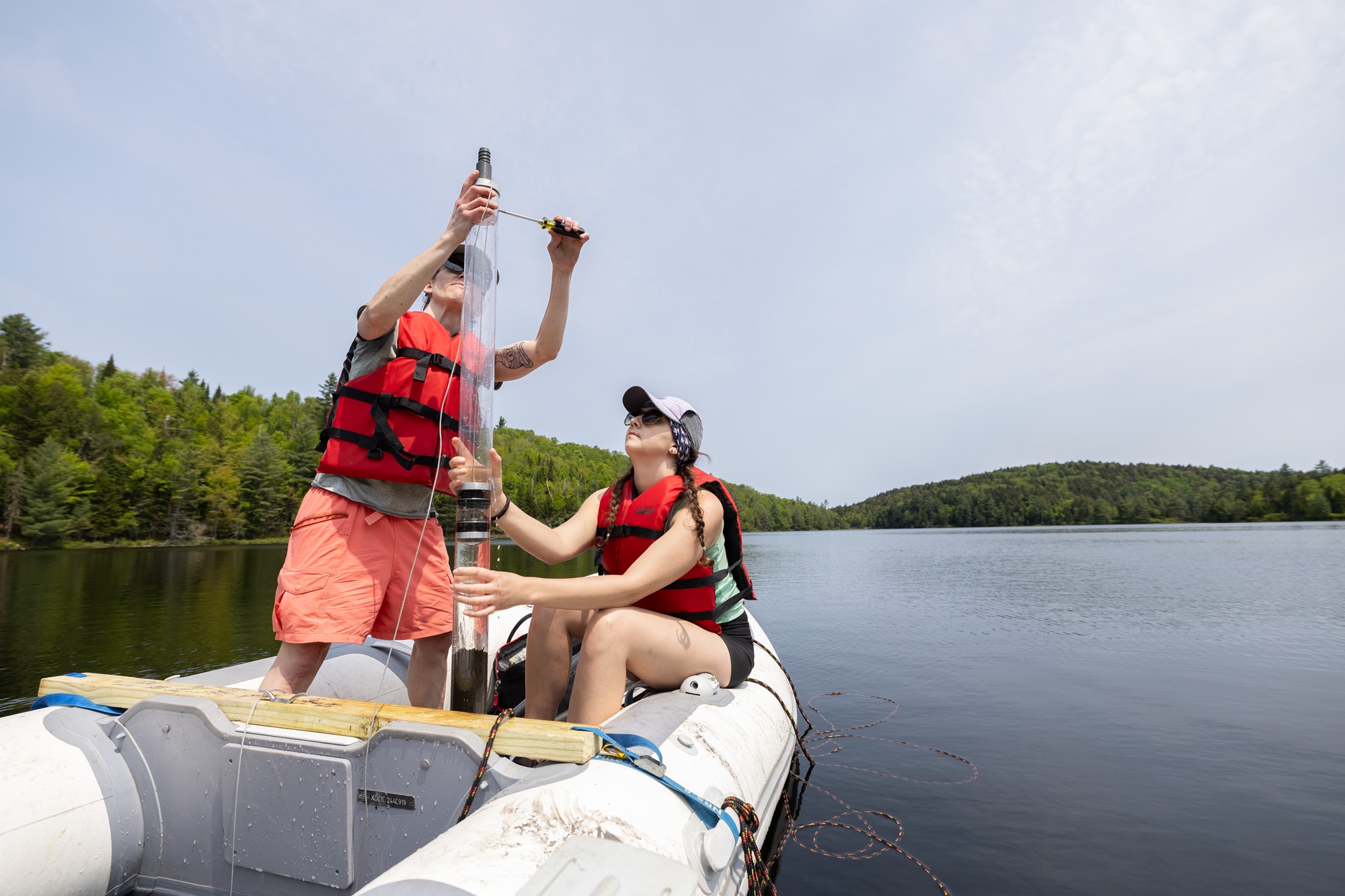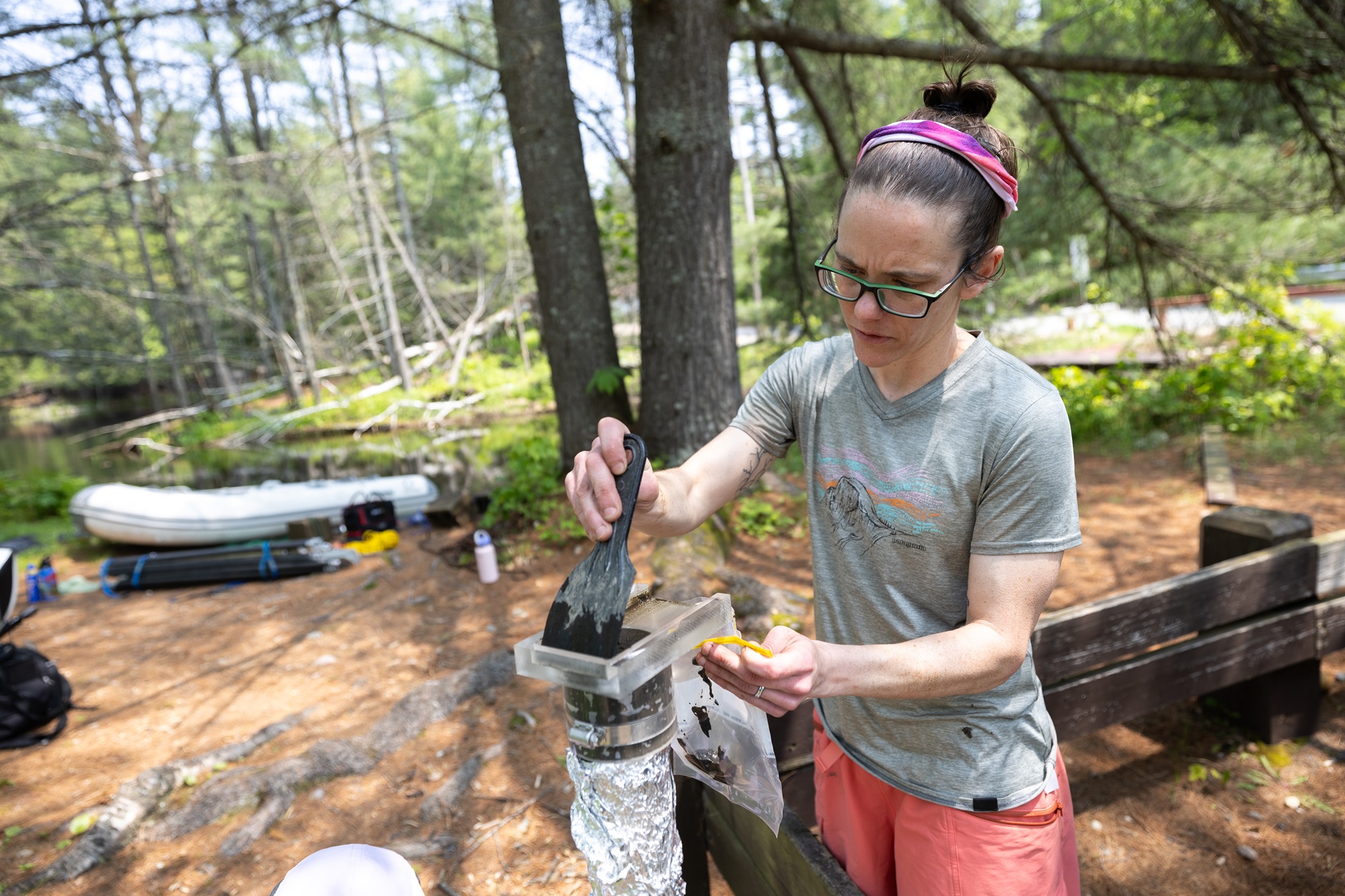UAlbany Researchers Track Climate History in Adirondack Lake Mud
By Mike Nolan
ALBANY, N.Y. (June 24, 2025) — Researchers in the University at Albany’s Department of Atmospheric and Environmental Sciences are uncovering centuries of climate history in the Adirondacks through an unsuspected source — lake mud.
Lake sediments (mud) act as natural archives, recording shifts in temperature, precipitation, vegetation patterns, and other environmental conditions over thousands of years. This information helps scientists better understand the lake’s climate past and how it relates to present or future trends.
UAlbany’s research team, led by Assistant Professor Aubrey Hillman, has spent several years collecting sediment cores from the bottom of lakes and ponds in the Adirondack region — most recently at Black Pond, located a short drive from Saranac Lake on the property of Paul Smith's College Visitor Interpretive Center.

Hillman, with support from UAlbany graduate student researcher Sumar Hart, collected a 30-centimeter sediment core from Black Pond earlier this month. The sediment was collected using a specialized coring device that preserves sediment layers in their original order, offering an uninterrupted timeline of environmental change.
It will be used as part of a larger study to analyze algae activity in Adirondack surface waters over the last 120 to 150 years.
“What we’re doing is collecting a short core that captures the interface between the water and the sediment, which will be used to reconstruct chlorophyll concentrations,” said Hillman. “Has the pond been blooming lately? How big are those blooms compared to the past? Only by looking back can we understand modern-day changes. It gives us a window into the past—like a history book."
Digging Up Climate History
In 2022, UAlbany opened the Paleoclimate Lab at the ETEC research and development complex. The lab is co-led by Hillman and Atmospheric and Environmental Sciences Assistant Professor Sujata Murty, who collects and analyzes coral to better understand past changes in ocean and climate systems.

By using in-house equipment, data analysis of the samples can be completed within a week or two, instead of the average six-to-12-month turnaround when relying on an outside lab.
Once it arrives at ETEC, the lake sediment sample is sliced into thin pieces, with each slice representing an interval of time. From there, several grams of sediment are placed together into a freeze-dryer, which removes all the water and preps them for analysis.
Hart, now a second-year PhD student, began working in the Paleoclimate Lab as an undergraduate student. She’s among about a dozen student research assistants who currently support the lab’s work.
"I hadn't really heard of paleoclimatology until I took a class during my senior year," Hart said. “This is now my fourth year working in the lab. Everything about it is so much fun. Paleoclimate research allows us to look back in time and understand how environments have changed and recovered. It is valuable information that can help inform current and future conservation efforts.”
More Adirondack Research
Along with algae activity, Hillman’s research team is also analyzing other past environmental conditions and ecosystem changes in the Adirondacks.
They published a study in April that presented the first documented evidence that Adirondack surface waters have made a near full recovery from metal pollution since the enactment of the Clean Air Act.
Originally passed in 1963, the Clean Air Act was one of the first major pieces of environmental legislation in the U.S., intended to reduce and control air pollution nationwide. The Adirondack Park was a prime target for the legislation, with decades of acid rain damage impacting the region.
The study was led by Sky Hooler, a graduate student researcher in the Paleoclimate Lab. By analyzing historical data and newly collected sediment samples, the research team found a greater than 90 percent reduction in metal contamination across four ponds in the Adirondacks over the last five decades.
“This research in the Adirondacks helps establish historical baselines to better understand current and future environmental changes in the region,” said Hillman. “It's not a perfect analog, but it gives us valuable insight for what these lakes might do going forward.”
Hillman’s team is also investigating other forms of pollution in the Adirondacks, such as microplastics, and leading a larger project examining ecological regime shifts across several lakes in the region.




